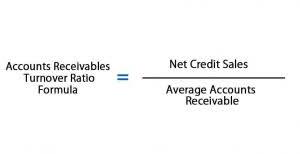
Management fees are a critical aspect of investing that significantly impacts an investor’s overall returns. The cost of having your investments professionally managed can vary dramatically depending on the investment strategy and methodology employed by the fund manager. In this section, we will explore various factors contributing to the disparity in management fees for actively-managed vs passively-managed funds. Emerging fee models like hybrid arrangements blend fixed and performance-based components, providing flexibility and risk-sharing advantages.
- This management involves costs, which investment companies recoup by charging investors an annual fee representing a percentage of their investment in the fund.
- The efficient market hypothesis (EMH) suggests that stock prices reflect all available information in a market.
- However, some investors may still be willing to pay higher fees for actively managed funds if they believe that the potential rewards justify the costs.
- Historical Performance of Active vs Passive FundsNobel laureate William Sharpe’s research has shown that passive fund management tends to outperform actively managed funds in the long term.
- However, there are still places you can get caught in high fee investments – beware hidden fees, and good luck investing.
- Find out how much you’ll need to open an account and how much—or how little—you’ll pay.
- This steep fee structure has raised eyebrows due to the inconsistent performance of hedge funds versus the market (Sharpe).
Types of annual fees
- It does not have any regard to your specific investment objectives, financial situation or any of your particular needs.
- By using this structure, all clients pay the same rate at the deposit level, no matter the account size.
- Management fees are prevalent in mutual funds, hedge funds, private equity, and other actively managed investment vehicles.
- Fee waivers often temporarily reduce management fees for specific periods, providing immediate cost savings.
- Fixed charges are a percentage of the AUM, irrespective of the fund’s performance.
- An actively managed fund has a manager, or a team, devoted to buying and selling stock frequently.
Rates are for U.S. dollar-denominated bonds; additional fees and minimums apply for non-dollar bond trades. Please note that markups and markdowns may affect the total cost of the transaction and the total, or «effective,» yield of your investment. The offering Mental Health Billing broker, which may be our affiliate, National Financial Services LLC, may separately mark up or mark down the price of the security and may realize a trading profit or loss on the transaction.

Navigating Hedge Fund Management Fees
These fees are important to consider as they affect the overall return on your investment. Mutual funds may charge various fees, including investment advisory fees, marketing expenses, brokerage fees, and expense ratios typically ranging from 0.25% to 1% annually. If purchased through a broker, commissions ranging from $10 to $75 per trade may also Certified Public Accountant apply.
Minimum investment requirements
A performance fee is based management fees on whether or not the fund beats certain benchmarks or targets and provides incentives to managers to obtain superior returns. This again underlines how performance fees can make a critical difference, especially in actively managed hedge funds. Always take the time to research fees, read the fund’s prospectus, and consider low-cost alternatives like no-load index funds or ETFs. This diligence will ensure you maximize your returns while minimizing unnecessary expenses.
- The team conducts research, monitors investments, and buys and sells stocks to meet investor contributions and withdrawals.
- We examined the trend in fund expenses using the asset-weighted average expense ratio.
- Investment funds usually levy this fee on investors as a percentage of the overall assets under management.
- Active funds have higher management fees due to the intensive research, frequent trading, and active decision-making necessary to beat the market.
- The load pays the broker for their efforts and gives an incentive to suggest a particular fund for your portfolio.
- As a result, it is very difficult for a small-cap fund manager to rely on secondary research as a basis for investment decisions.
- An investor can redeem shares by swapping them for an equivalent basket of stocks rather than selling them on the secondary market.
Everything you need in one portfolio

Another important factor to consider when investing in mutual funds is whether the fund is a load or no-load fund. Load mutual funds include a sales charge or commission paid to an intermediary, such as an adviser or a broker, for their services when shares are purchased. Interestingly, average expense ratios for actively and passively managed equity mutual funds have generally decreased in recent years. The category “Deferred Sales Charge (Load)” in the fee table refers to a sales load that investors pay when they redeem fund shares (that is, sell their shares back to the fund). You may also see this referred to as a “deferred” or “back-end” sales load. Funds that sell their shares through brokers, or intermediaries, must compensate those brokers.


Investment fees directly impact long-term returns, making it essential for investors to understand how they are structured. Management fees provide fund managers with stable revenue but are charged regardless of performance, while performance fees incentivise fund managers to generate higher returns but may encourage excessive risk-taking. ETFs are traded directly on an exchange and may be subject to brokerage commissions, which can vary depending on the firm. While the absence of a load fee is advantageous, investors should beware of brokerage fees, which can become a significant issue if an investor deposits small amounts of capital on a regular basis into an ETF. While fees vary, the average equity mutual fund management fee is about 1.10%. Most index funds and a small group of actively managed funds don’t charge a load.